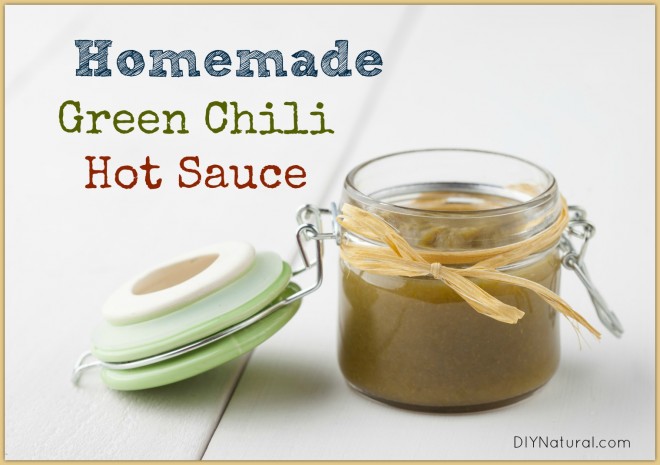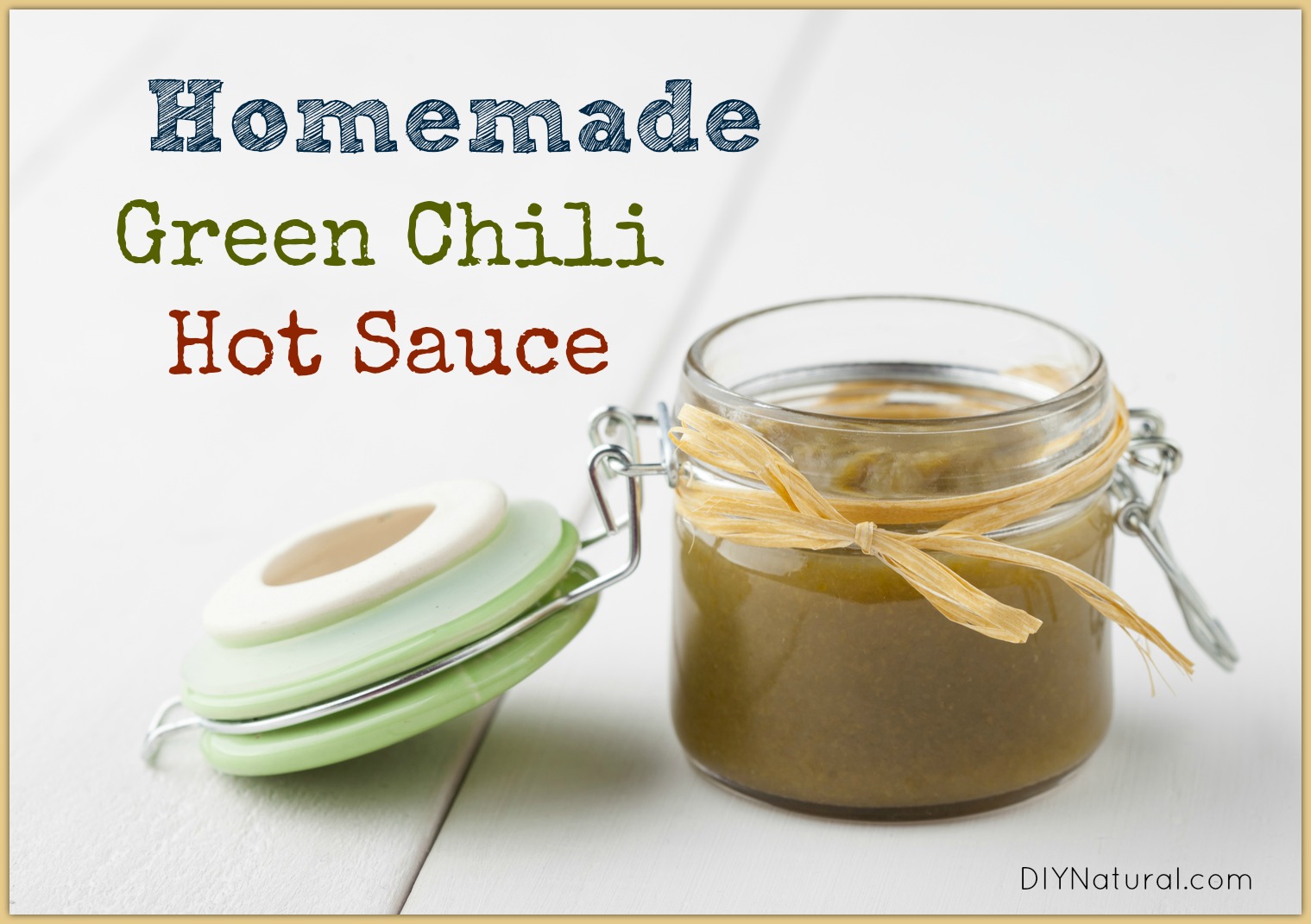
My Fermented Green Hot Sauce Recipe
I love hot sauce!
When I was younger I didn’t want anything to do with food that was “hot” (think spicy heat, not temperature heat), but nowadays I like to add a spicy kick to just about everything I eat.
Because I enjoy cooking, and like making things myself, creating my own hot sauce recipe was a no-brainer.
While I do like heat, I don’t like “burn your face off” heat, so I shoot for a balanced approach of heat and flavor.
Enter the jalapeño pepper!
I love red pepper hot sauce, but find myself reaching for my green chili hot sauce about half of the time, so I make this sauce from a mixture of jalapeño and serrano peppers.
How hot is it?
The heat depends on the ratio of jalapeños to serranos. Serrano peppers are 3-4 times hotter than jalapeño peppers. (Serranos score around 20,000 on the Scoville scale while jalapeños are closer to 5,000.)
I tend to go with a 3:1 ratio of jalapeños to serranos because it creates the heat/flavor balance I like best. You do what you like best.
Why should you ferment?
The fermentation process helps make food more digestible, boosts its nutrient and beneficial bacteria content, and also works to preserve the food for longer storage and use. Traditionally most condiments were fermented and served alongside food to add flavor and aid digestion. Many condiments, including hot sauces, are still fermented today.
Fermenting the hot sauce also mellows out the raw taste and works to balance the flavor profile of the peppers. While you don’t have to ferment this sauce, I highly recommend you do.
Tools Needed
Food processor
While you can slice and dice your peppers with a knife, I HIGHLY recommend a food processor. We have tested many and found the cream of the crop when we settled on the Breville BFP800XL Sous Chef. It. Is. Amazing! Investing in a good food processor will benefit and simplify your kitchen projects for years to come. If you’ve been on the fence about getting one, now’s the time to make the leap and invest.
Cheesecloth
You will want a high quality, reusable cheesecloth like this one.
Blender
I use a powerful Vitamix blender so it turns into a liquid.
Liquid whey
If you don’t have liquid whey on hand, making your own is easy:
- Put plain yogurt (I recommend organic, full-fat) in cheesecloth or a tea towel.
- Tie up the cloth and suspend it over a bowl (I hang it from a kitchen cabinet knob).
- Let the whey drip out for several hours or until all the liquid has separated.
Once separated, store the liquid whey in a mason jar in the refrigerator. It will last about 6 months and can be used as a starter culture for any of your lacto-fermented recipes. Use the cheese solid as spreadable cheese on bread or bagels, a base for cheese dips, or any other creative use you can think of (like in lasagna).
My Green Hot Sauce Recipe
Ingredients
- 15 jalapeño peppers (approximately 16 oz)
- 5 serrano peppers (approximately 2.5 oz)
- 1 Tbsp liquid whey
- 2 tsps unrefined sea salt (find unrefined sea salt here)
- 1 – 1 ½ cup water (I use well water, but if you have city water then use spring water)
- 1 cup white vinegar (added after fermentation).
Process
Note: When you start fermenting the hot sauce it will be a bright green. When the fermenting is complete it will be a greenish-brown, like the photo.
- Trim ends off peppers and place whole into your food processor. (I throw in the seeds and everything.)
- Add whey and salt and process until peppers are a paste – a few small pieces are fine because we’re going to blend it up later.
- Using a spatula, transfer to a quart mason jar and cover with the water.
- Cover the jar loosely – don’t screw the lid on all the way – so the fermentation gasses can escape. Put jar in a 65-70°F room–like the basement–if possible; if not possible just get the temperature close and you should still be fine.
- Place on your kitchen counter until fermentation is complete (bubbling stops). The process usually takes 1-2 weeks but can be done as soon as several days. If you see a white film forming on top you can scrape it off and add a bit more brine (salt dissolved in water) to the top. I usually just leave the film and spoon it off when fermentation is complete; it stays together and comes off in a solid layer. (This is likely yeast, not mold.)
- After fermentation, blend the fermented peppers and vinegar in your blender, remove, and refrigerate.
I usually fill an old hot sauce container for everyday use, then keep my quart mason jar in the fridge to refill the hot sauce container as needed.
This hot sauce will last 6 months or so, although I have never had it go bad. The good bacteria from fermentation work to keep the sauce from spoiling.
Be Creative and Experiment
Did I exclude your favorite peppers or didn’t make it hot enough for you? Experiment!
Use a few habaneros, add some garlic, or do whatever suits your taste so you can come up with a few hot sauce recipes you’re proud of. Heck, you could even start selling them at your local farmer’s market!
Have you ever made your own hot sauce? Let us know about it in the comments below.
*******




Hi Matt
Yes I agree I try to use as many fermented products as I can in my diet it really helps with my fauna and flora.
Great Idea to do this to my chili sauces, and now it will last longer too!
I haven’t really fermented something myself before. But I defiantly want to start doing it…
My Question is:
Every time I take my natural yogurt out of the fridge their is a white liquid lying on top. Like the yogurt separates…Do you think this could be the whey liquid?
If it is I can just easily pour it out and use for making this recipe.
Yes Leanne, that sounds like whey so go for it!
Thanks for the recipe!
I understand the benefits of fermenting, but I haven’t tried it yet. My question is this: How does the flavor of this sauce compare to regular, vinegar-based sauces?
This recipe has vinegar so it’s flavor profile is pretty consistent with other Jalapeno pepper sauces.